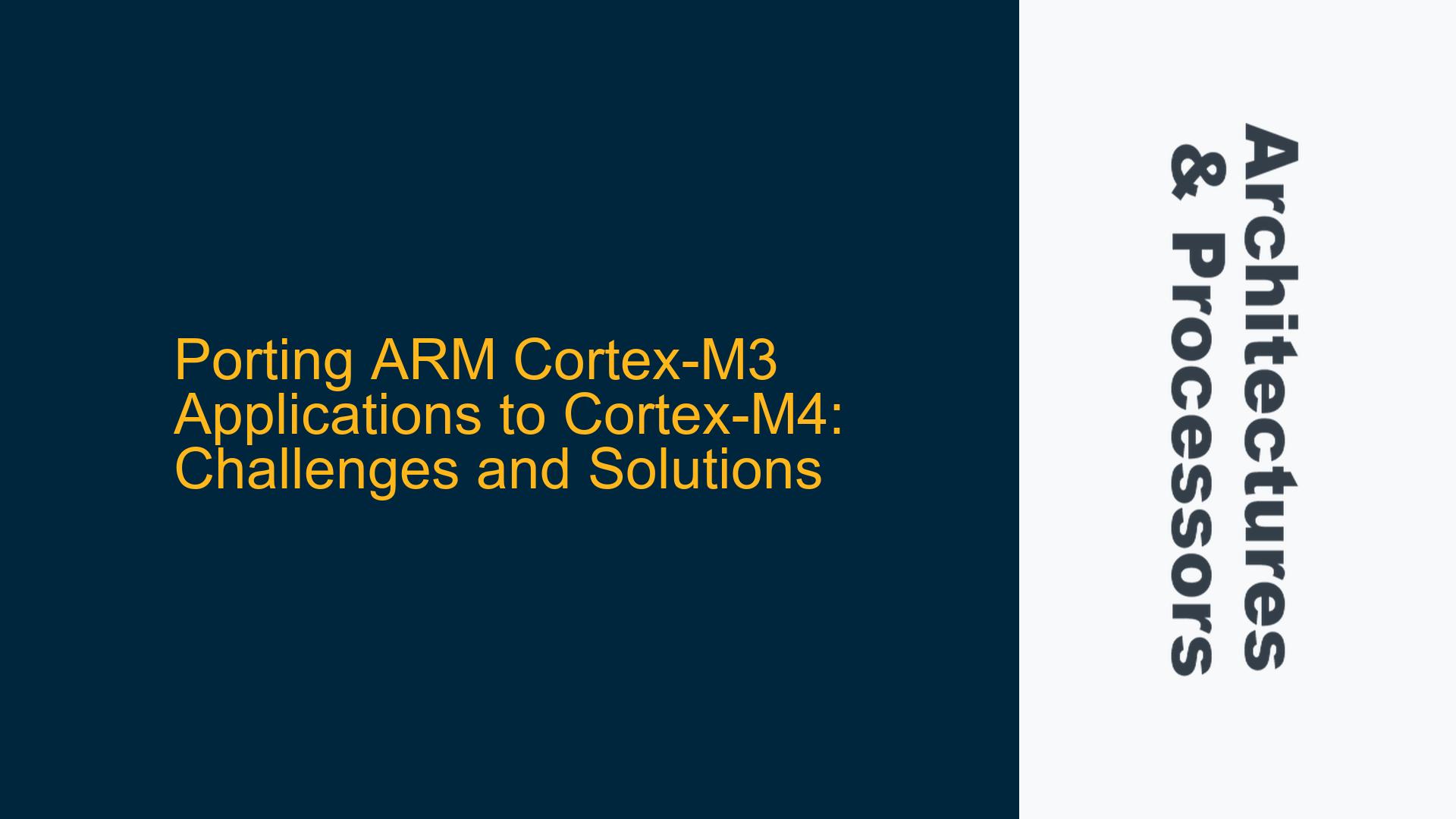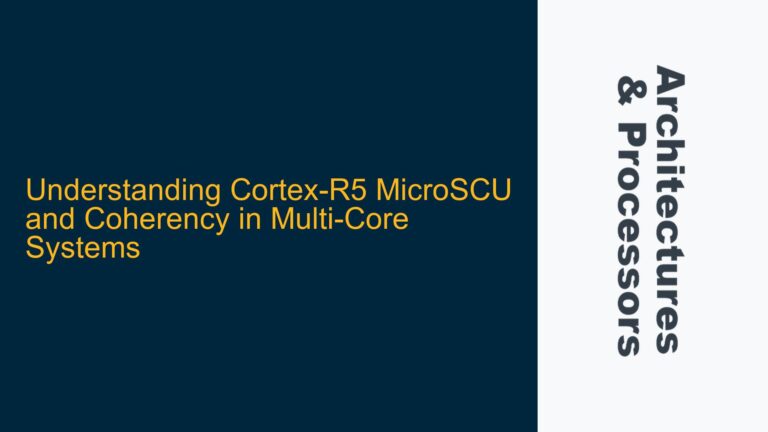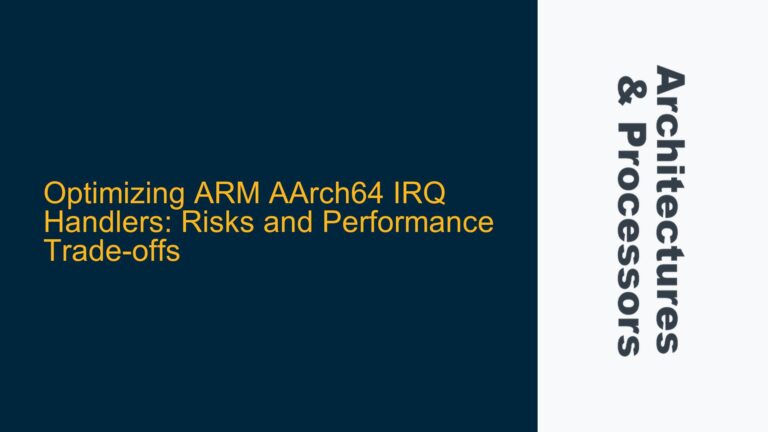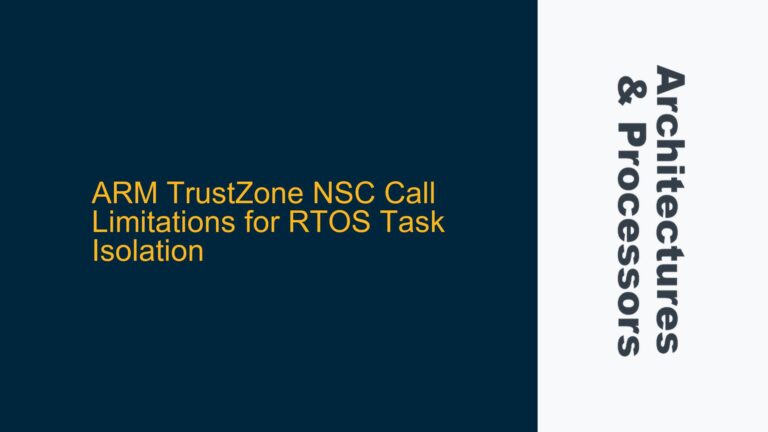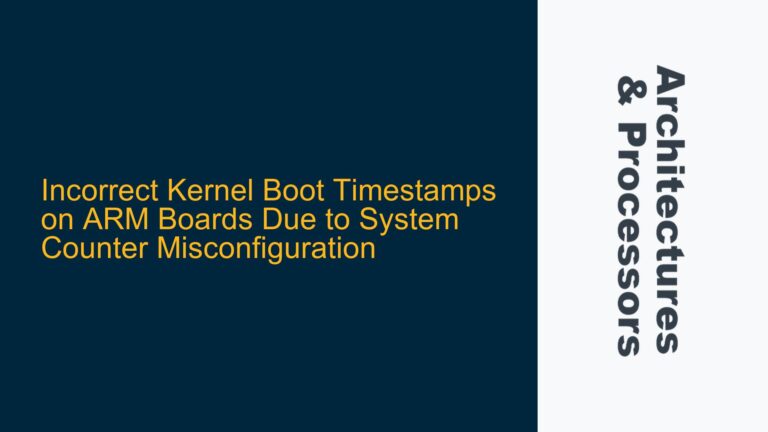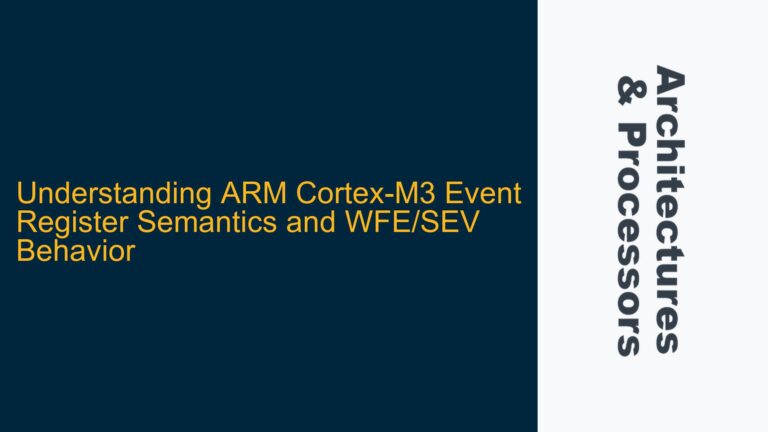ARM Cortex-M3 to Cortex-M4 Code Portability and Recompilation Complexity
The process of porting an application from an ARM Cortex-M3 to a Cortex-M4 processor involves understanding the architectural similarities and differences between the two cores. While both Cortex-M3 and Cortex-M4 belong to the ARMv7-M architecture family, the Cortex-M4 introduces additional features such as the DSP (Digital Signal Processing) extensions and optional Floating-Point Unit (FPU). These enhancements can significantly impact the recompilation process and the overall performance of the application.
The Cortex-M3 and Cortex-M4 share a common instruction set, which means that most of the code written for the Cortex-M3 can be recompiled for the Cortex-M4 with minimal changes. However, the presence of the DSP and FPU in the Cortex-M4 can lead to optimizations that were not possible on the Cortex-M3. For instance, the Cortex-M4 supports SIMD (Single Instruction, Multiple Data) instructions, which can accelerate certain types of computations. If the original Cortex-M3 code does not take advantage of these features, the recompilation process may require modifications to fully leverage the Cortex-M4’s capabilities.
Moreover, the Cortex-M4’s memory system and peripherals may differ from those of the Cortex-M3, especially when considering the specific System-on-Chip (SoC) implementations. These differences can affect the way the application interacts with hardware, such as GPIOs, SPI, I2C, and other peripherals. Therefore, while the core instruction set compatibility simplifies the porting process, attention must be paid to the hardware-specific aspects of the target SoC.
Impact of SoC-Specific Features and Peripheral Differences
One of the primary challenges in porting an application from Cortex-M3 to Cortex-M4 lies in the SoC-specific features and peripheral differences. The Cortex-M3 and Cortex-M4 cores are often integrated into different SoCs, each with its own set of peripherals, memory maps, and clock configurations. These differences can necessitate changes in the application code, particularly in the initialization and configuration of hardware peripherals.
For example, the GPIO (General-Purpose Input/Output) pins on the Cortex-M3-based SoC may have different configurations or capabilities compared to those on the Cortex-M4-based SoC. If the application relies on specific GPIO features, such as alternate function mappings or interrupt capabilities, these may need to be adjusted during the porting process. Similarly, communication interfaces like SPI (Serial Peripheral Interface) and I2C (Inter-Integrated Circuit) may have different register layouts or operational modes, requiring modifications to the driver code.
Another consideration is the memory map. The Cortex-M3 and Cortex-M4 may have different memory layouts, especially in terms of SRAM, Flash, and peripheral memory regions. If the application makes assumptions about the memory map, such as fixed addresses for certain peripherals or memory-mapped I/O, these assumptions may need to be revisited when porting to the Cortex-M4.
Additionally, the clock configuration and power management features of the Cortex-M4-based SoC may differ from those of the Cortex-M3. The application may need to be updated to reflect these differences, particularly if it relies on specific clock frequencies or power-saving modes. For instance, the Cortex-M4’s FPU may require a higher clock frequency to operate efficiently, which could impact the overall system clock configuration.
Optimizing Code for Cortex-M4 DSP and FPU Capabilities
To fully leverage the Cortex-M4’s DSP and FPU capabilities, the application code may need to be optimized during the porting process. The Cortex-M4 introduces a set of DSP instructions that can significantly accelerate signal processing tasks, such as filtering, Fourier transforms, and matrix operations. If the original Cortex-M3 code performs these tasks using standard ARM instructions, it may benefit from being rewritten to use the Cortex-M4’s DSP extensions.
Similarly, the Cortex-M4’s optional FPU can greatly enhance the performance of floating-point operations. If the application involves complex mathematical computations, such as those found in control systems, audio processing, or scientific simulations, the FPU can provide a substantial performance boost. However, to take advantage of the FPU, the code must be compiled with the appropriate compiler flags and may need to be modified to use floating-point data types and operations.
The optimization process may also involve restructuring the code to better utilize the Cortex-M4’s SIMD capabilities. SIMD instructions allow multiple data elements to be processed in parallel, which can lead to significant performance improvements in data-intensive applications. For example, image processing algorithms, such as convolution or edge detection, can benefit from SIMD optimizations.
In addition to code-level optimizations, the porting process may involve tuning the application’s memory usage and access patterns to align with the Cortex-M4’s memory architecture. The Cortex-M4’s memory system is designed to support high-speed data access, and optimizing the application’s memory usage can further enhance performance. This may involve reorganizing data structures, aligning data to cache lines, or using DMA (Direct Memory Access) to offload data transfer tasks from the CPU.
Conclusion
Porting an application from an ARM Cortex-M3 to a Cortex-M4 processor involves a combination of understanding the architectural similarities and differences, addressing SoC-specific features and peripheral differences, and optimizing the code to leverage the Cortex-M4’s advanced capabilities. While the core instruction set compatibility simplifies the recompilation process, attention must be paid to the hardware-specific aspects of the target SoC and the potential for performance optimizations. By carefully considering these factors, developers can ensure a smooth transition from Cortex-M3 to Cortex-M4, resulting in an application that is both functionally correct and optimized for the target hardware.
